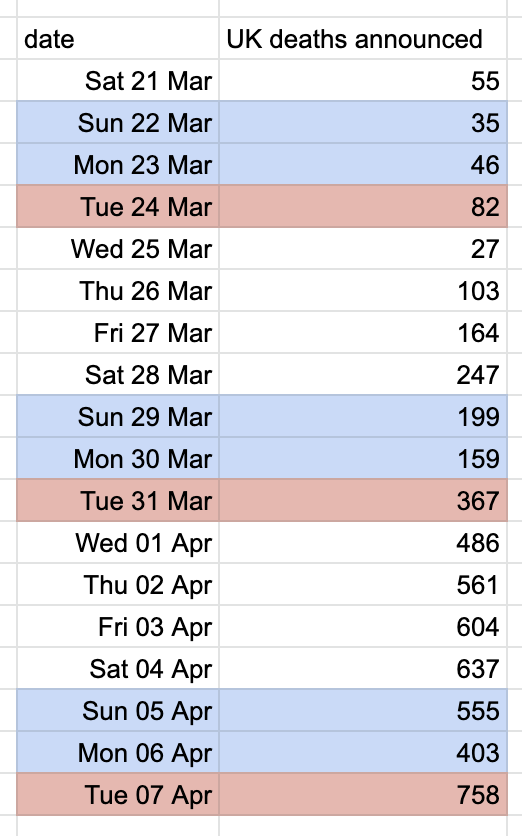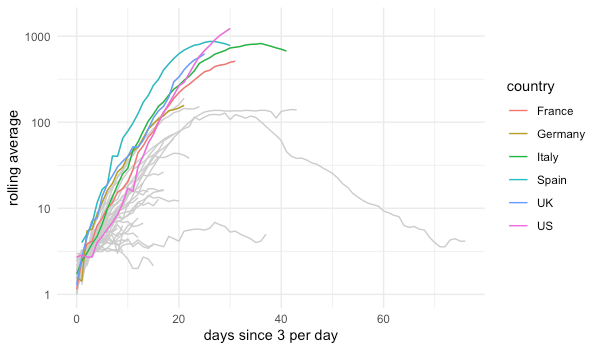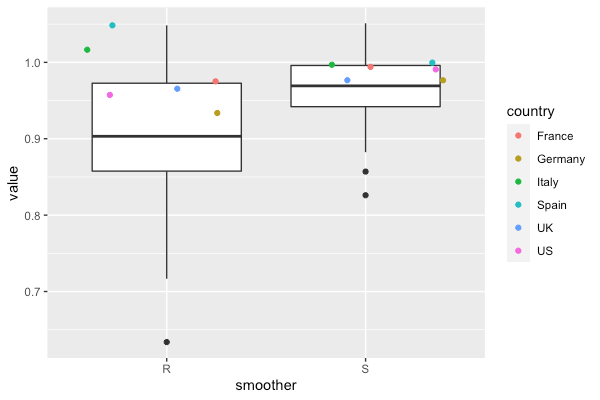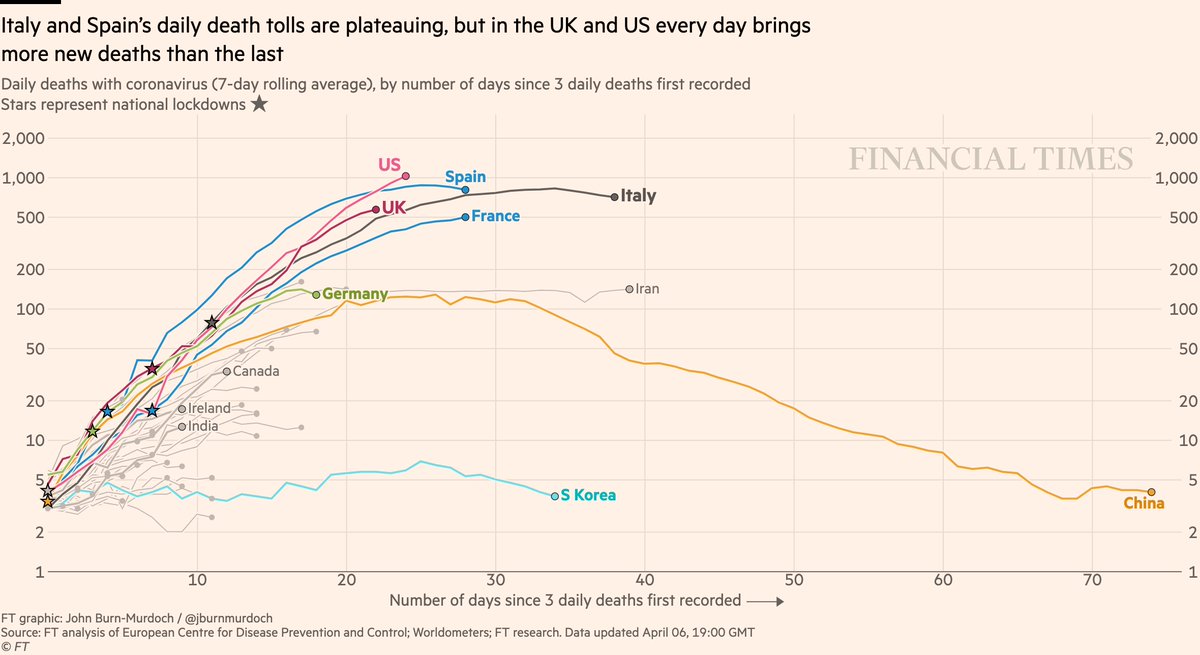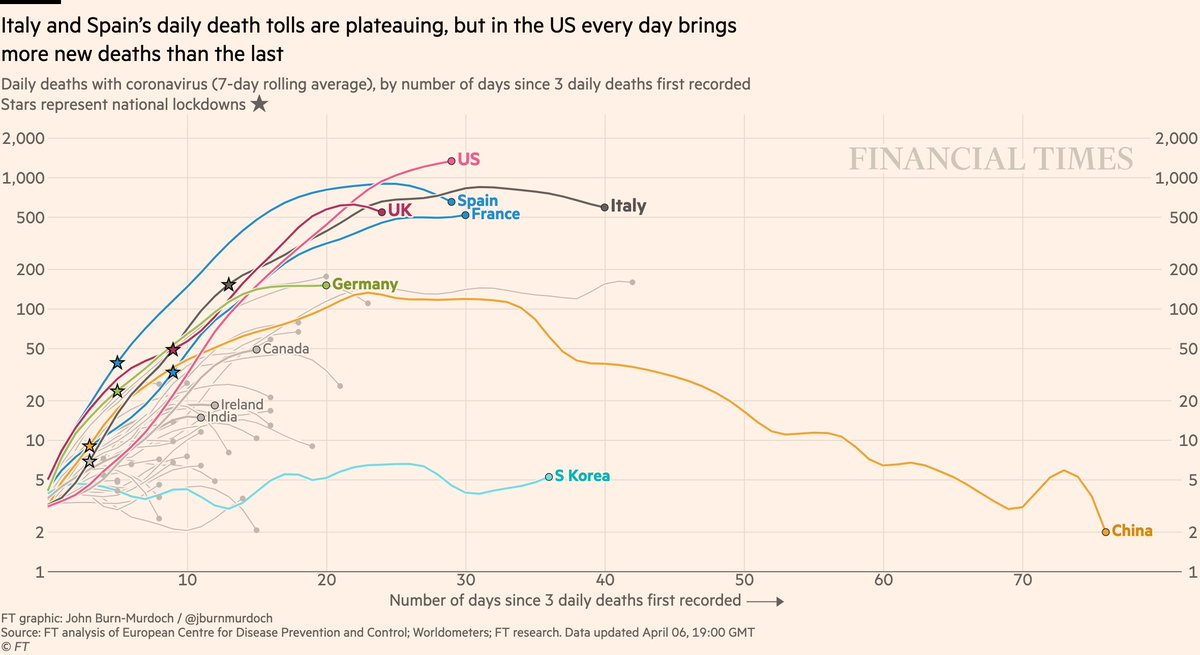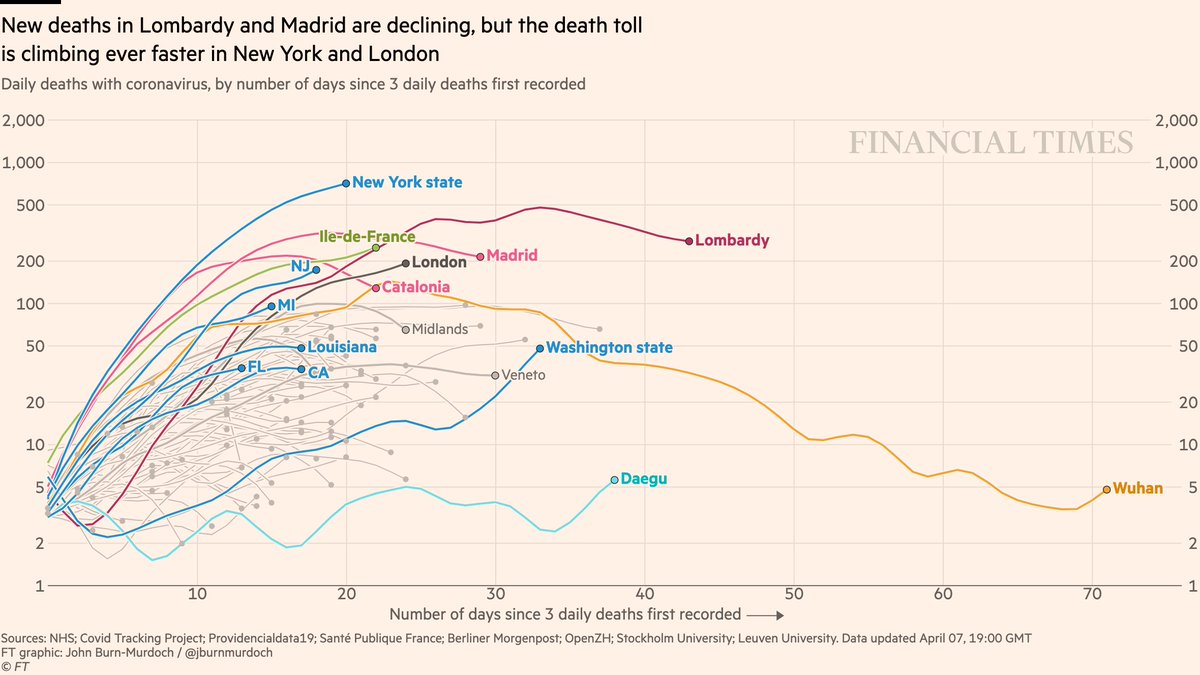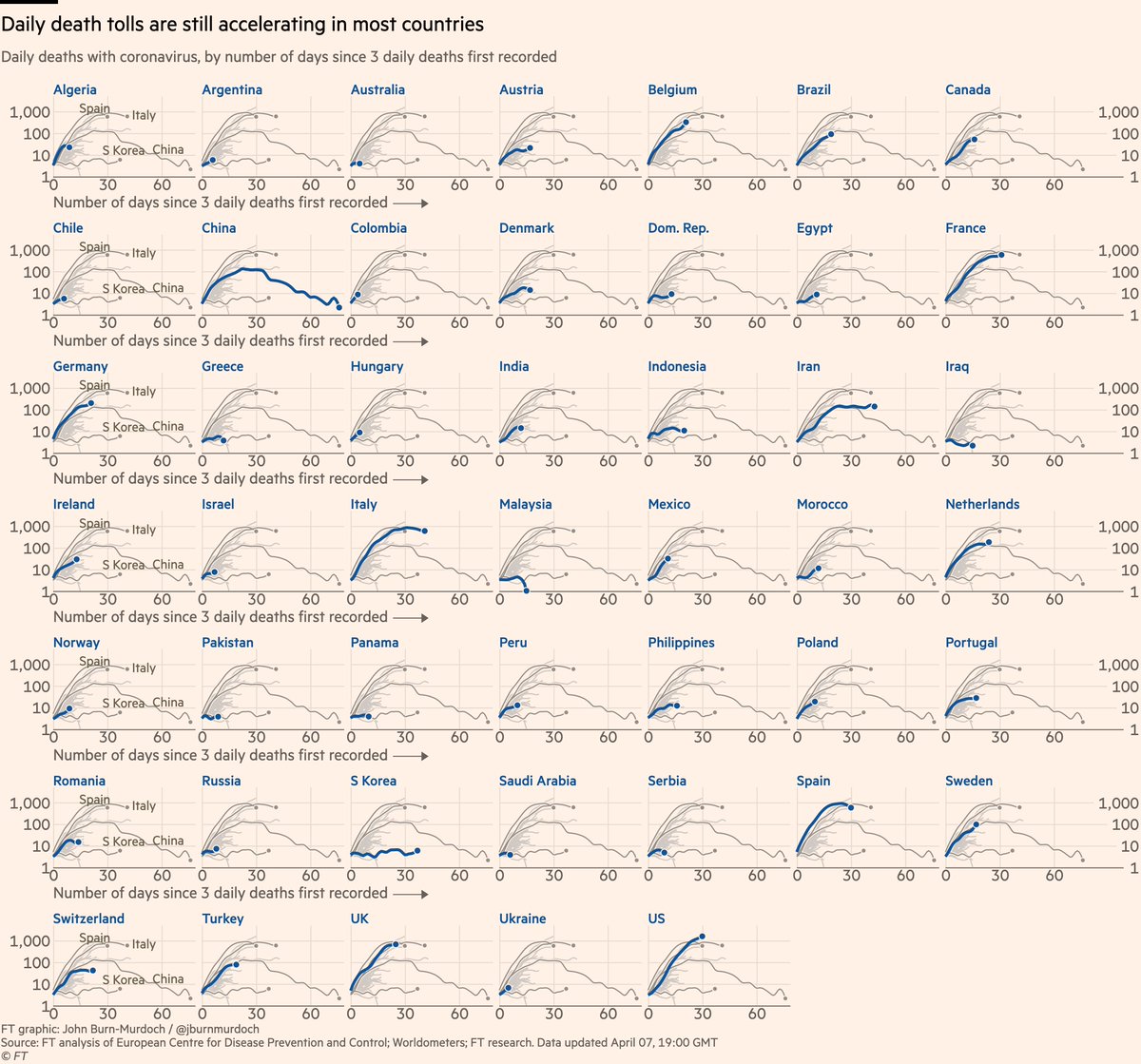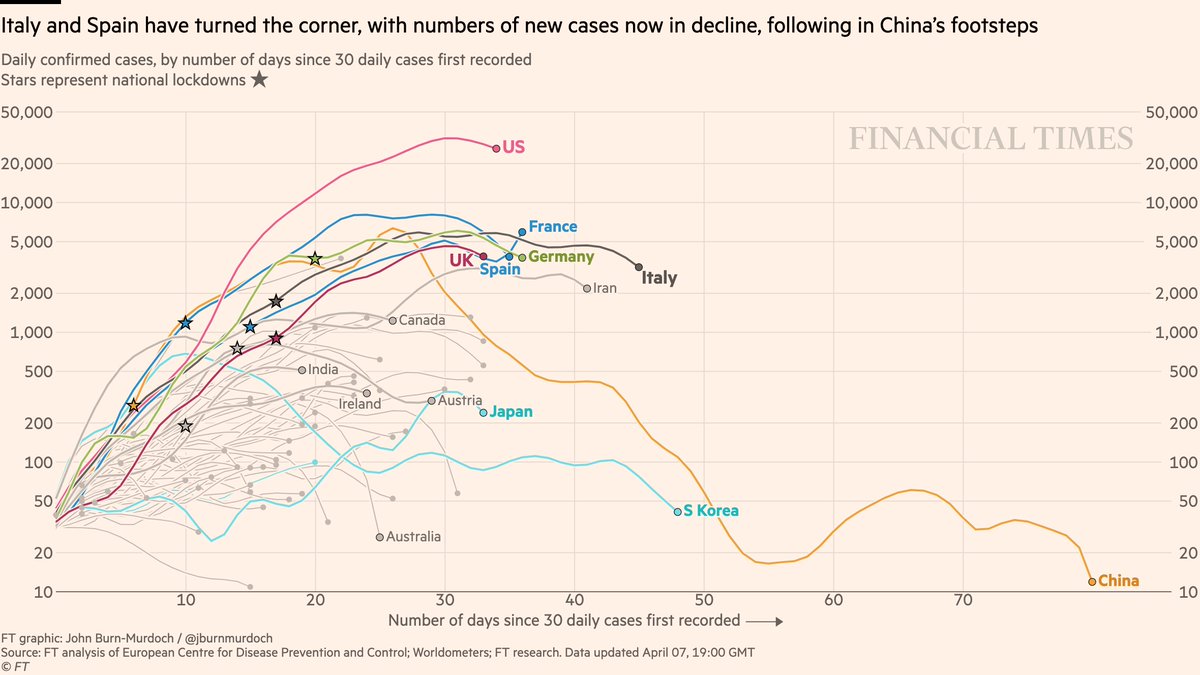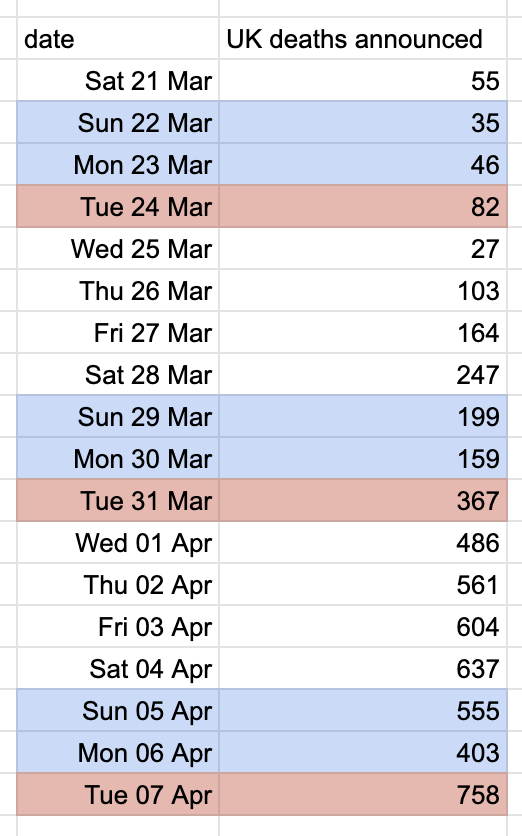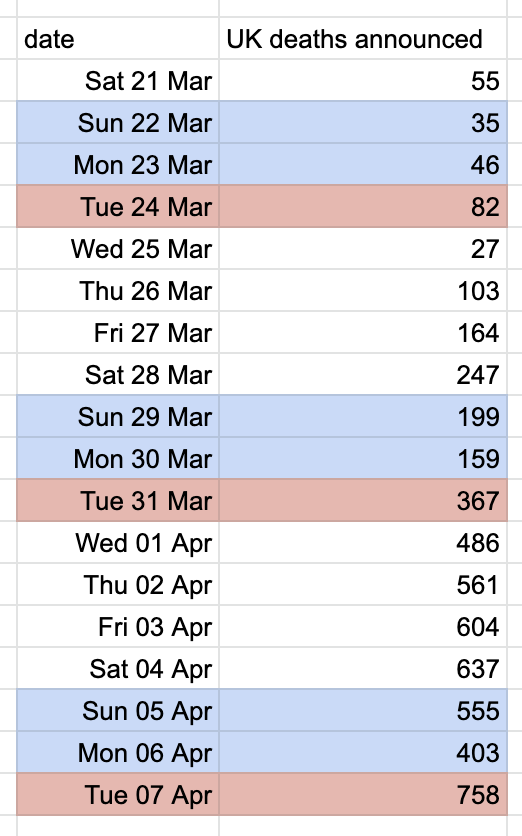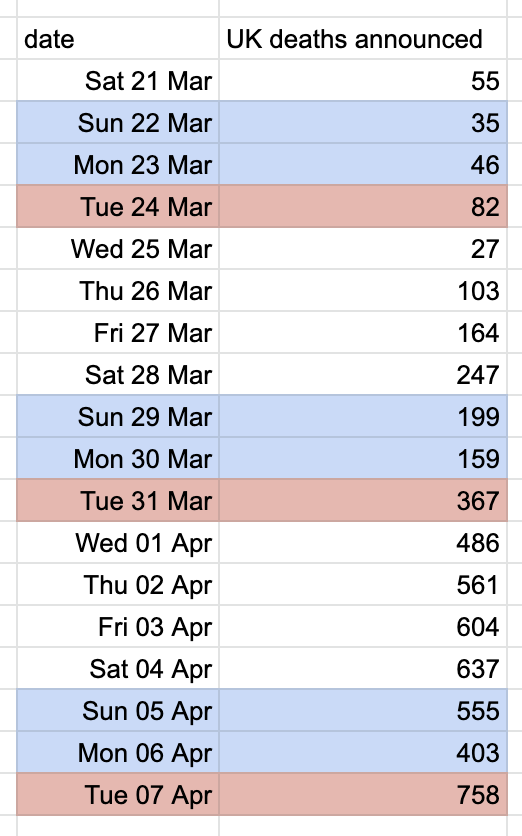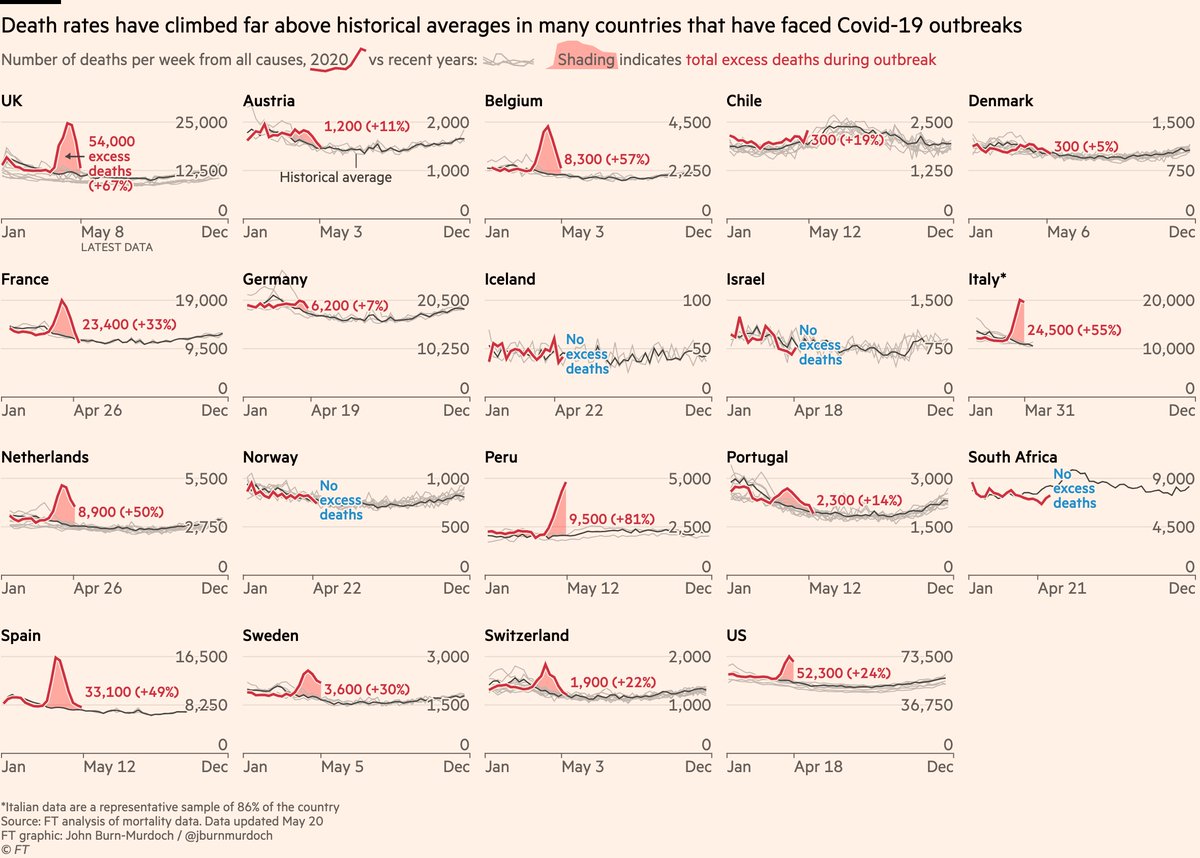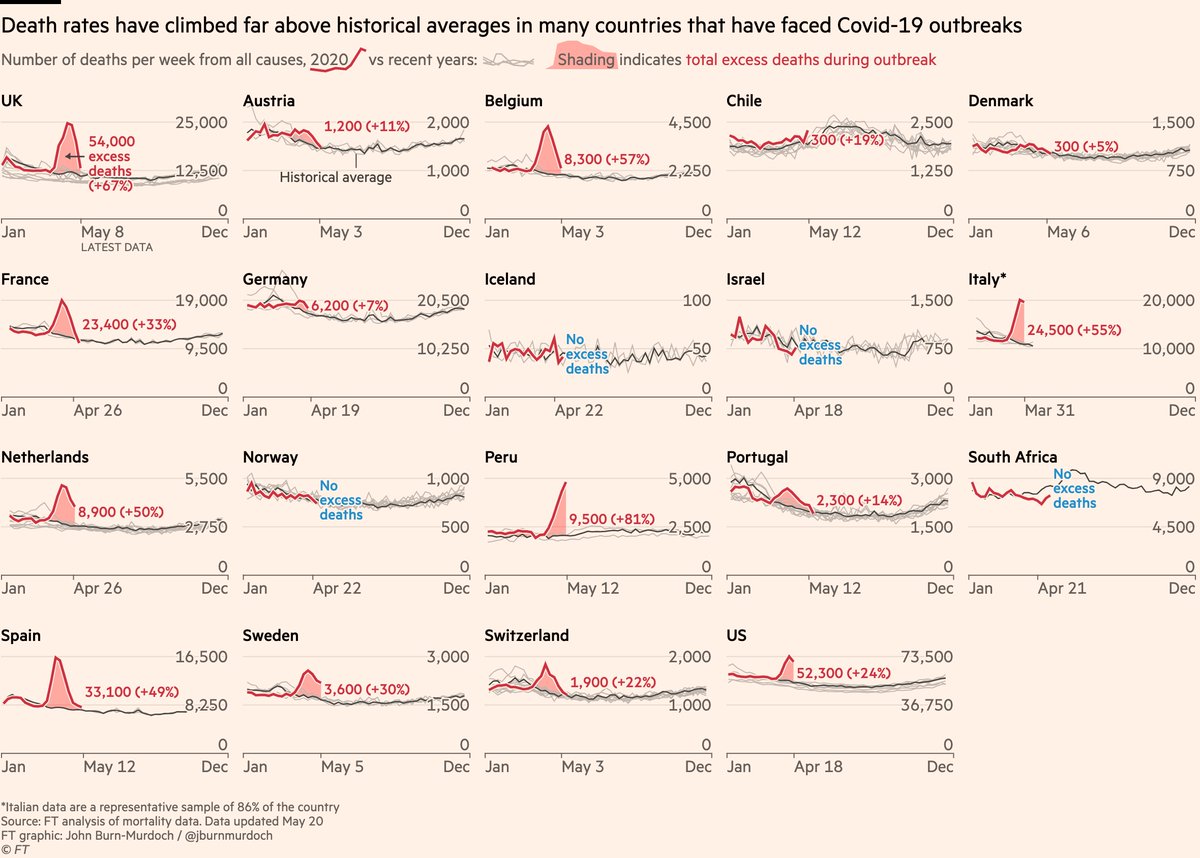Big changes here, so tonight’s thread will be fewer charts and more explanations.
Here’s the revamped daily deaths chart. I’ve switched from a 7-day rolling average to true daily numbers*
All charts: ft.com/coronavirus-la…
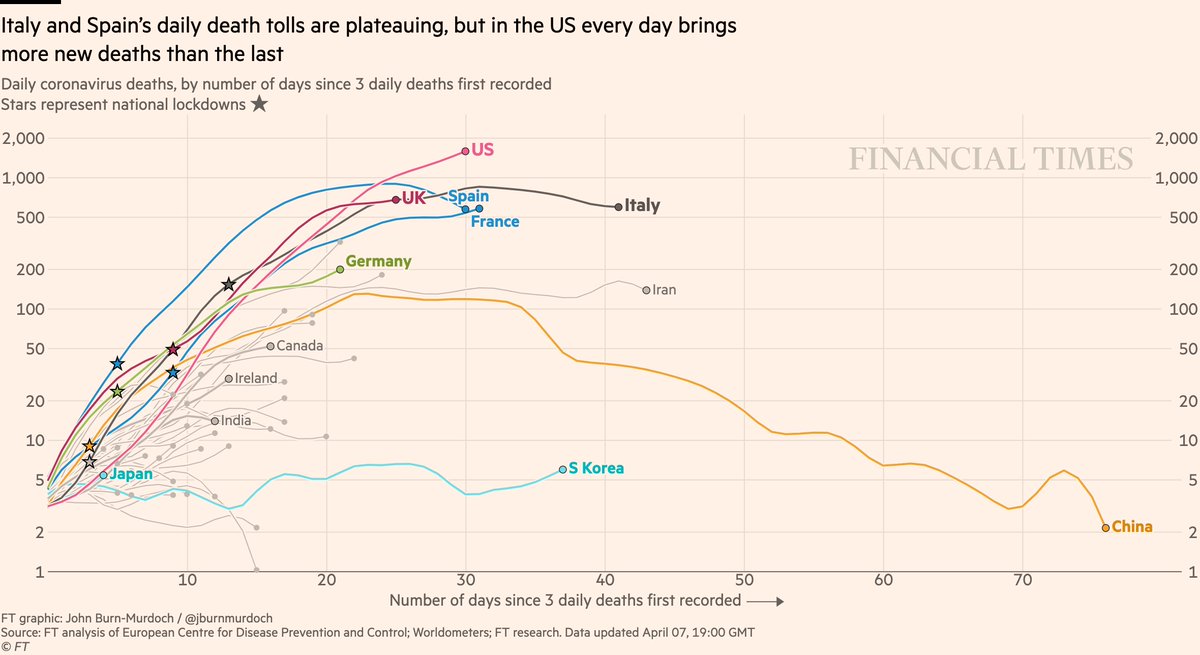
• UK curve has flattened due to two dips then a spike. Wait and see what the week brings
• Germany trending upwards
• Japan now on the chart and trending up 📈
All charts: ft.com/coronavirus-la…
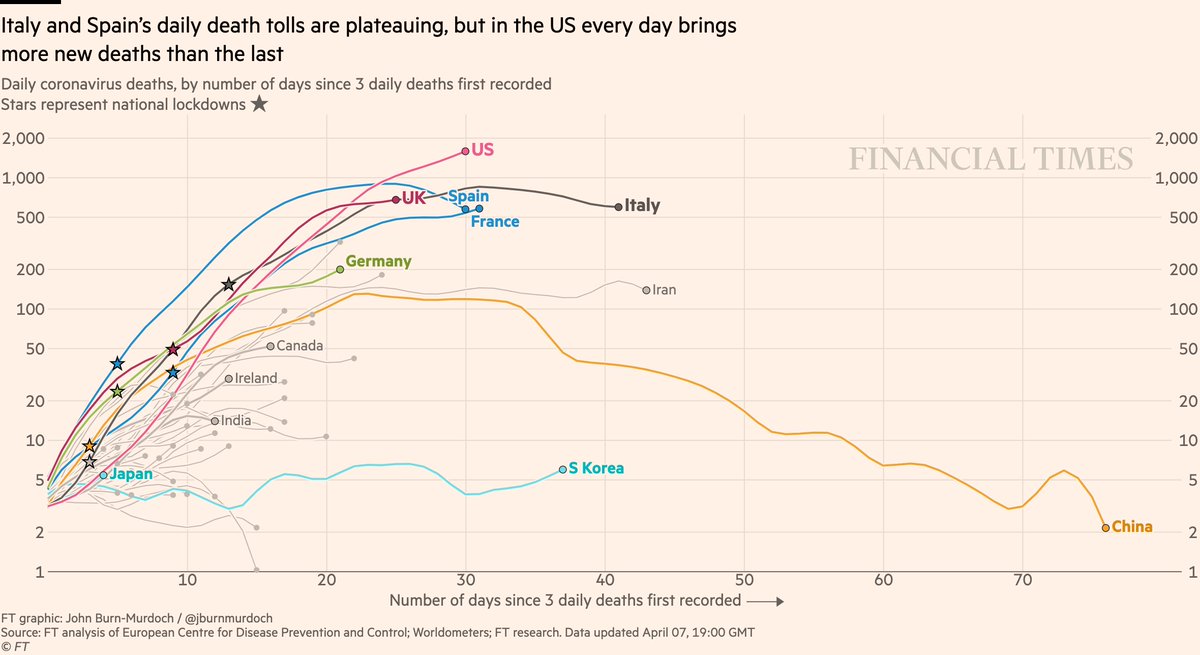
• Rolling average, because it irons out false precision from noisy daily reporting and highlights medium-term trends?
• Spline, because we still have smoothness for following individual lines, but we’re also more faithful to that day’s reported data point?
The charts you see every night are just the last step in a giant process.
Vast amounts of the data coming in from individual countries is essentially junk.
Even in developed countries we know the stats are flawed, but this will be worse elsewhere: ft.com/content/c07e26…
A foggy picture of general trends in messy outbreaks that are incredibly difficult to track.
• It demonstrates why we opted for the rolling average in the first place
• It highlights the problems with the raw data
• It was a useful exercise to undertake that will come in useful in future
🤓😀😵😴
Courtesy of a brilliant tip-off from @Crick247, here’s a very interesting bit of weekly "seasonality" in reported UK daily deaths:
Every Sunday and Monday, reported deaths are lower than Saturday. Every Tuesday, they rise sharply 🧐
Why?
